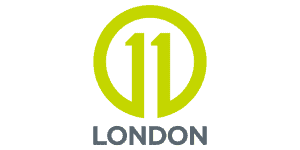The Eleven guide to NFTs
March 24, 2022 | Health NFTs, NFTs, digital marketing, healthandhumanity
Non-Fungible Tokens (NFTs) have been making waves in the news lately, specifically around the millions of dollars being exchanged for unique digital art assets. Investors have been queuing up to purchase pictures of bored apes or Damian Hirst dot paintings in this latest gold rush to hit the art world, powered by blockchain.
NFTs were originally created in the early 2010s to link blockchain to digital collectables, coupons, and company shares (amongst other things) and prove the original ownership. Anyone can create an NFT via numerous online ‘minting’ services: the process of minting creates a cryptocurrency asset, which can be traded, bought and sold with cryptocurrencies on a digital marketplace.
As a tradeable, certifiable asset, NFTs are not limited to the world of art. They have many potential practical applications, some of which could benefit the medical sector.
Genetic data
The first of these could apply to the licensing of data provided by genetic researching sites such as 23andme – allowing users to monetise and profit from their health data¹. NFTs could help reduce concerns around the use of such sensitive information, allowing individuals to keep track of its journey through the health system. As a patient myself, I’ve had extreme difficulty tracking down and gathering my historic health records, but if they were a minted entity, having control over them would be a far easier task. Additionally, it would allow for secure data transfer between doctors, and an authentic audit trail of who has had access to it and when.
Pharmaceuticals
Another practical use for NFTs within the pharmaceutical manufacturing industry could be to help curb the sale of counterfeit drugs and black-market prescriptions². Pharma companies could mint an NFT which is then attached to the batch. NFTs are, as previously explained, entirely unique and create digital footprints that can be easily tracked which would streamline the tracking process for legitimate pharmaceuticals, and potentially remove opportunities for fraud.
Blood donations
Since NFTs create an immutable record on the digital ledger, an NFT could be given to blood donors to show how their blood travels through the system until it reaches the recipient³. Beyond the obvious benefit of traceability, the donation could be added to a digitised version of the bloodbank, allowing hospitals to very accurately track which bloodbanks have what bloodtypes in supply, and for the banks to send it out as and when it is required.
“As a tradeable, certifiable asset, NFTs are not limited to the world of art. They have many potential practical applications, some of which could benefit the medical sector.”
Environmental impact
While these are all exciting possibilities, there are considerable environmental issues regarding the energy required to validate NFT transactions on Ethereum, one of the major blockchains⁴. To put this into context, it takes a total of 148.63 kW/h (kilowatt hours) to process 100,000 visa transactions. Whereas one singular Ethereum transaction alone requires 238.22 kW/h. To put this in perspective, on average a single NFT transaction uses 48.14 kW/h, which is enough to power a standard house for a day and a half⁵.
So what can we do?
The biggest and simplest way to decrease the environmental impact of NFTs would be to switch over to another, more eco-friendly blockchain such as Algorand, Tezos, Hedera, Hashgraph or another Proof of Stake network. Ethereum is a Proof of Work (PoW) network, which means that the blockchain is verified by virtual miners around the world, competing to be the first to solve an incredibly complex maths puzzle. These maths puzzles can involve trillions of numerical guesses generated by incredibly high-power computers, and, since this is a virtual race with a winner awarded a prize of cryptocurrency, consumes VAST amounts of energy. Proof of Stake (PoS) is a little different. While there still is a massive mathematical puzzle to solve, not everyone is racing at once. PoS networks use a team of ‘validators’ to validate new transactions, update the blockchain, and “win” the rewards. In order to become a validator, you must ‘stake’ your own crypto for the chance to do so. This means that the energy consumption is cut down to only those most invested, as opposed to everyone who wants to win, all at the same time.
Conclusion
NFTs will soon become part of our daily – more connected – lives: booking tickets to events, replacing the key to your house, and even, some day soon, being able to track all of our health data. There are many good reasons for having a unique, traceable record of ownership, but until the environmental impact has been reduced, it may be a while before we can call it a sustainable option.
About 11 London
11 London is an advertising and communications agency, based in West London. We work in the areas of health and humanity – with organisations, brands or products that improve or prolong life. To learn more about 11 London, please contact:
References
¹https://medicalfuturist.com/nfts-an-health-data/
²https://www.thestreet.com/defi/digital-finance-investing/healthcare-is-the-newest-frontier-for-nfts
³https://www.thestreet.com/defi/digital-finance-investing/healthcare-is-the-newest-frontier-for-nfts
⁴https://www.statista.com/statistics/1265891/ethereum-energy-consumption-transaction-comparison-visa/
⁵https://www.renewableenergyhub.co.uk/blog/how-much-energy-do-nfts-take-up/
This content was provided by 11 London





